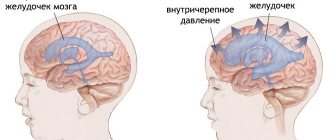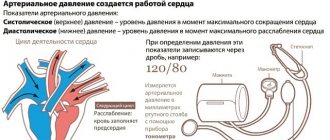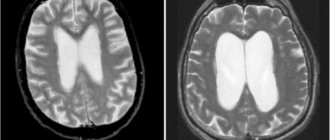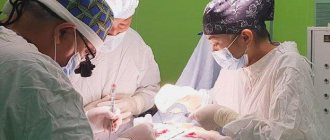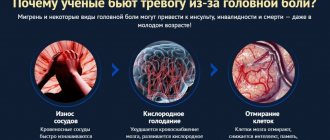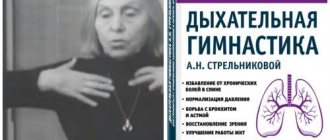According to WHO statistics, every third person on Earth has high blood pressure. This unpleasant symptom can be either an independent disease (hypertension) or a consequence of another disease (arterial hypertension). Most often, older people complain of high blood pressure, but young people can also have high blood pressure. There can be many reasons:
- Unhealthy lifestyle, bad habits and unhealthy diet;
- Significant excess weight;
- Diseases of the urinary system;
- Stress;
- Lack of microelements;
- Vascular atherosclerosis;
- Taking certain medications;
- Etc.
Hypertension - causes and mechanism of development
Hypertension is a chronic disease in which there is a frequent increase in blood pressure. If normally it is 120/80 mm. rt. Art., then at 140/90 mm. rt. Art. The initial stage of the disease has already been diagnosed. In some patients, only the systolic (upper) pressure increases, but the lower (diastolic) pressure may also increase along with it. The diagnosis is made based on the results of measuring blood pressure in different physiological states: during rest and after exercise.
Blood pressure increases due to dysregulation, vascular spasms and other factors. In most patients, hypertension is primary - it manifests itself as an independent disease, and a hereditary predisposition can also be observed. In other cases, the disease is caused by long-term use of certain groups of drugs, including hormonal drugs, kidney disease and metabolic disorders. Thus, secondary (symptomatic) hypertension is diagnosed, which also often causes headaches and high blood pressure.
Doctors identify risk factors that can provoke attacks of hypertension, as well as aggravate the course of the disease in the early stages. These include:
- overweight – up to 85% of patients diagnosed with chronic hypertension suffer from obesity;
- smoking - this bad habit reduces the ability of blood vessels to respond to changes in blood pressure, and also provokes ischemia (oxygen starvation) of the myocardium;
- insufficient physical activity, sedentary lifestyle, working behind a monitor;
- stressful situations that activate the sympathetic nervous system and lead to a persistent increase in blood pressure;
- patient's age.
According to statistics, in young people hypertension is secondary and is associated with a person’s lifestyle. High blood pressure and headaches are often triggered by bad habits, stress and poor diet. At the age of 40 years and older, sclerotization of the arteries is diagnosed - a decrease in their strength and elasticity as a result of the growth of connective tissue. This process is irreversible, but can be reversed by taking medications, adequate exercise and a therapeutic diet.
Causes of pressure surges
Probably, more than once, everyone who suffers from hypertension has noticed that their pressure is constantly changing, and at the same time, peculiar “jumps” in pressure occur, that is, it either increases or, on the contrary, decreases.
There are several reasons:
- The first reason is hormonal.
That is, the cerebellum gives a strong signal to the adrenal gland, and it releases a certain enzyme into the blood that causes a sharp jump in blood pressure. To diagnose this, it is advisable to undergo an ultrasound to examine the adrenal glands; - The second reason is psychological or emotional.
If a person is emotional or unbalanced, then this may well affect the stability of blood pressure; - The third reason is physical
. Excessive physical activity, heavy lifting, overexertion during sports; - The fourth reason is atmospheric pressure, as well as the level or strength of magnetic storms.
If a person is very sensitive in this regard, then any jump in atmospheric pressure will have a very adverse effect on his health; - The fifth reason is pharmacology.
Some medications can increase blood pressure; if a person suffers from hypertension, then medications can only be taken after consultation with your doctor. - The sixth reason is lability of the autonomic nervous system
. All our vessels have their own small innervation. Sometimes, the nervous system is overly sensitive than usual, and when excited, these nerve endings can affect vascular tone. With minor disturbances, the pressure can rise excessively high and also decrease.
Of course, there are plenty of reasons for pressure surges, and if a person has hypertension (and other diseases, including chronic ones), it is advisable to be attentive to everything. After all, hypertension is not a battle, but a whole war that will accompany all life, and a person’s goal is not to lose in it!
Features of headaches in hypertension
Pressure headaches are the result of impaired vascular ability to adapt to external and internal changes. Blood presses on the inner walls of blood vessels, irritating the receptors. These signals travel to the brain, where they are converted and cause pain. In advanced stages of the disease, this condition is accompanied by increased fluid pressure inside the skull, which also causes severe headaches.
Chronic hypertension manifests itself as alternating periods of rest and increased blood pressure. During attacks, the patient has a very headache, the pressure in the arteries rises sharply. This can be caused by a number of factors:
- physical or mental fatigue - in this case, to normalize blood pressure indicators, it is enough to pay attention to proper rest;
- changes in weather conditions - a sharp increase in atmospheric pressure often provokes attacks of hypertension, which can be eliminated with rest and medications;
- abnormal physical activity – causes acceleration of blood flow and heart rate, which is dangerous if the elasticity of the blood vessels is insufficient;
- pregnancy – hormonal changes cause attacks of hypertension;
- unhealthy diet – consuming excess amounts of salt and spices leads to impaired removal of fluid from the body, swelling and an increase in the volume of circulating blood.
Headache with high blood pressure has its own characteristics. It can be caused by various reasons, so it is usually classified into vascular, liquor, ischemic and neuralgic. In most patients, it spreads to the temples and back of the head. It is sharp, pressing, and leads to impaired concentration. With a sharp increase in pressure, hearing and vision deterioration and fainting may occur.
Vascular pain
The main cause of vascular syndrome is a violation of the outflow of fluid from the brain. Arteries and veins fill with blood, tissue swelling is observed. This leads to irritation of nerve receptors and an increase in pain. The pain in the head with pressure is pressing, the pulsation of blood vessels is felt. It intensifies if you lower your head down, as well as with sudden movements, coughing and sneezing.
Liquor syndrome
Another reason why headaches occur with pressure is a violation of the movement of cerebrospinal fluid. This is a special fluid that is found in the brain and spinal cord. It performs a shock-absorbing function, protects soft tissues from compression and regulates pressure in the skull. Normally, it circulates constantly, but in case of vascular pathologies, heart disease and chronic hypertension, it is retained in the brain. This process is accompanied by aching, bursting pain, which intensifies during sudden movements of the head. The process is dangerous because the cerebrospinal fluid also contains nutrients for nerve cells. If fluid circulation is not stimulated, this can lead to cerebral ischemia and trigger a stroke.
Ischemic pain syndrome
The cause of headaches and pressure can be spasm of blood vessels. This leads to insufficient oxygen and nutrients reaching certain areas of the brain. The patient also experiences hearing and vision impairment, dizziness, a sharp increase in blood pressure and weakness. Attacks are relieved by using antispasmodics; rest and means to normalize the functioning of the nervous system are also useful.
Neuralgic pain
Increased pressure inside the skull affects all nerve structures. Excess cerebrospinal fluid leads to compression of the trigeminal nerve, which is responsible for the innervation of the skin and muscles of the face. The pain in this case is sharp, throbbing, concentrated in the facial part. It worsens during movement, bending and turning the head.
Additional symptoms
It is important for a patient with chronic hypertension to know how a headache occurs with high blood pressure. It has several features that indicate a simultaneous increase in blood pressure:
- headache spreads to the back of the head and temporal parts of the head;
- the nature of the pain is pressing, there is a feeling of expansion of the contents of the skull;
- filling of blood vessels leads to redness of the skin and mucous membranes, minor hemorrhages are possible due to damage to the walls of the capillaries;
- ringing or noise in the ears is a typical sign of high blood pressure;
- blurred vision, the appearance of various hallucinations in the form of black dots or circles before the eyes;
- weakness, fatigue, decreased performance;
- dizziness, nausea;
- a sharp increase in blood pressure is the cause of fainting.
If your head starts to hurt severely, you need to measure your blood pressure. The procedure can be carried out independently, using a tonometer. This device should be in every home medicine cabinet, even if there are no patients with chronic hypertension in the family. Headaches go away after blood flow is restored and pressure is normalized, including with individually selected medications.
Expert opinion
Alexander Yuryevich Shishonin notes: in order to relieve headaches due to hypertension, it is first necessary to correct the pressure. It is best to do this non-medically.
Information on how to lower blood pressure is presented on the website
of the Club of Former Hypertensives
. Those who have not yet become a member of the club can do so completely free of charge. The site provides a lot of useful and interesting information from the field of cardiology and orthopedics.
Shishonin also draws attention to the fact that headaches occur in only 50% of hypertensive patients. In the other half, high blood pressure is not accompanied by headaches. Why does cephalalgia occur? The answer is simple. The fact is that with high pressure, the blood flow to the head increases, and the outflow, in turn, weakens. This is most likely due to pinched veins that carry blood away from the brain.
Important.
If a person has increased intracranial pressure, then no painkillers will help him.
If a hypertensive person has a tonometer, for example, shows 180/100 mm. rt. Art., then you need to keep in mind that intracranial pressure can be 1.5-2 times higher than blood pressure. This is due to impaired outflow of venous blood from the head.
Note.
It is worth noting that headache with arterial hypertension is not the only sign of the disease. During its course, other symptoms of malaise are observed. Having identified signs of hypertension, you should not delay a visit to the doctor. Only an experienced specialist will be able to find out the true reason for their appearance.
What should you do if a headache occurs due to hypertension?
Dr. Shishonin recommends that hypertensive patients apply a cold compress to the back of the head if cephalgia occurs. In addition, the occipital-cervical area can be wiped with pieces of ice for 1.5-2 minutes. Then the treatment area must be wiped dry with a towel.
The above procedures lead to a reflex expansion of blood vessels and blood outflow from the brain. Thus, intracranial pressure returns to normal.
Note.
It is very important not to overdo the use of ice, since with short-term exposure to tissue, cold (ice) dilates blood vessels. But if ice is used for more than 5 minutes, it will lead to vasoconstriction. This should not be allowed, as the patient’s condition will only worsen.
Can I get a headache when taking antihypertensive pills?
The specialists at Doctor Shishonin’s Clinic are vehement opponents of the use of pills for hypertension. The head physician of a medical institution notes that if a patient, while using antihypertensive drugs, somehow copes with blood pressure and still has a headache, then this is a direct confirmation that he has problems with the venous outflow of blood.
To normalize arterial and intracranial pressure, as well as improve venous outflow, you can use cold compresses on the occipital region and perform a simple set of exercises for the neck, developed by Dr. Shishonin.
Advice.
If you take pills for blood pressure, and it has returned to normal, but your head continues to hurt, it means they are not helping you. Give up this method of treatment and look for another, more qualified doctor.
First aid for high blood pressure
If you don't have medications on hand, and before consulting your doctor, there are a few steps you can take to lower your blood pressure. Also, these methods help relieve vascular spasm and restore cerebral blood flow. Doctors at the Clinical Brain Institute recommend following a number of simple steps:
- provide the patient with rest in a cool room;
- sufficient oxygen access - simple ventilation often helps to relieve pain, nausea and dizziness;
- massage of the neck and head is a way to relax the muscles and reduce their pressure on the blood vessels; you can do it yourself;
- a cool compress applied to the temples and soles of the feet.
Doctors advise limiting yourself to only those drugs that are indicated in the prescription. If they do not help, you should contact for a second consultation and adjust the list of medications. In addition, the patient should not independently increase the dosage of drugs to increase blood pressure and take additional drugs for a quick effect.
Contraindications for hypertension
Headache with hypertension has its own characteristics. To get rid of it, it is necessary to relax the vascular walls and cause their expansion, as well as stimulate the outflow of excess fluid. At home, it is prohibited to take the following measures to treat pain caused by increased blood pressure:
- be in a stuffy room;
- take a hot bath, visit a bathhouse or sauna;
- drink coffee or natural strong tea, which also contains high concentrations of caffeine;
- buy or drink alcoholic beverages.
It is important to understand that treatment tactics and first aid differ for high and low blood pressure. Before taking medications, you must use a tonometer, and then periodically monitor the readings. It is especially important to monitor them in case of vegetative-vascular dystonia, a chronic disease in which blood pressure periodically changes both up and down.
What to do?
If your blood pressure has increased, a headache or other accompanying symptoms have appeared, it is highly likely that this is a hypertensive crisis. The sequence of actions should be as follows:
- Relief of crisis and normalization of blood pressure.
- Finding out the cause of the crisis.
- Taking measures to prevent crises, because each of them can result in acute coronary syndrome, cerebral hemorrhage, aortic dissection or other serious complication, the number of which is in the dozens.
All of the above should be done by the doctor, not the patient. At the first stage, the doctor stops the attack. The rate of decrease in blood pressure should not exceed 25% in 2 hours. Target blood pressure should be achieved no earlier than a day or two after the crisis. This effect is achieved by a combination of fast-acting drugs and long-acting drugs.
The doctor’s further task is to find out the cause of the crisis and eliminate it. The patient requires ongoing antihypertensive therapy if his blood pressure is higher than normal.
Diagnostic methods
You can diagnose hypertension at home, if you have a working tonometer. However, the disease may have its own characteristics and occurs for various reasons. It is important to undergo a full examination to determine why your blood pressure is rising. This information will help you choose an effective treatment regimen, as well as prevent further development of the disease. After examining and measuring blood pressure, the doctor may prescribe the following diagnostic methods:
- MRI of the head is one of the most effective methods, which is used when there is a suspicion of increased intracranial pressure, the presence of neoplasms and foci of ischemia;
- Dopplerography of the vessels of the neck and head is an informative technique that involves studying blood flow using a contrast agent;
- clinical and biochemical blood tests - allow you to evaluate the chemical composition of the fluid and determine protein metabolism disorders;
- X-ray of the cervical spine - spondylosis, osteochondrosis and other diseases that lead to compression of blood vessels and increased blood pressure in them will be visible in the pictures.
The Clinical Brain Institute has all the conditions to undergo a complete examination for headaches and high blood pressure. To confirm the diagnosis, the patient will be offered consultations with specialists of a narrow and broad profile. This will allow you to comprehensively consider the disease and select treatment that will affect not only the symptoms, but also the cause of the disease.
Is your blood pressure going up?
To make a diagnosis and provide the necessary assistance, a neurologist will listen to your complaints, conduct an examination and a comprehensive neurological examination, which includes:
- collection of anamnesis of the disease (conversation);
- special neurological tests;
- reflex diagnostics;
- local palpation examination of the spine and musculoskeletal system.
In addition to the main examination, if necessary, the doctor may prescribe:
- MRI;
- Ultrasound;
- X-ray;
- Lab tests;
- EEG;
Treatment of headaches with high blood pressure
An acute attack of headache can be relieved with analgesic drugs. These include Citramon, Analgin and other products that are in the simplest home medicine cabinet. However, to control blood pressure levels, an individual treatment regimen is prescribed. It depends on the cause and stage of hypertension, the patient’s age, the presence of concomitant diseases and other factors. It may include drugs from different groups.
- Selective beta blockers are drugs that reduce the heart rate, which leads to a decrease in pressure on the internal walls of blood vessels. This group includes Bisoprolol, Metoprolol and their analogues.
- Calcium channel blockers (Cordafen, Felodipine) are often prescribed for the complex treatment of hypertension because they have no side effects. They prevent the penetration of excess calcium ions into the walls of blood vessels. This causes them to expand and relax, as well as slowing down the rapid heartbeat.
- Medicines from the nitrate group (Nitrong, Kardiket) are used for significant increases in blood pressure. They will help reduce it in the short term, but are not suitable for long-term use.
- Alpha blockers (Phentolamine) are drugs that quickly relieve vascular spasms and restore blood movement through the arteries.
- Diuretics (Furosemide, Lazex) are diuretics. They are suitable for taking in a course and are used in the treatment of chronic hypertension. These drugs stimulate the removal of excess fluid and control the volume of circulating blood.
- Antispasmodics are a group of drugs that quickly relieve vascular spasms. This group includes No-Shpa, Spazmalgon and other drugs that are suitable for eliminating headaches of any origin.
If your blood pressure often rises and your head hurts, this requires complex treatment. Doctors at the Clinical Institute of the Brain will select the optimal regimen, which will include only the necessary drugs. They should be taken at home and blood pressure should be measured periodically. In addition, doctors will prescribe a therapeutic diet with a reduced amount of salt, fatty foods and processed foods. To treat hypertension, it is also necessary to give up bad habits, smoking and drinking alcohol.
Prevention methods
Most patients are diagnosed with acquired hypertension. This means that timely prevention will help avoid its occurrence and strengthen blood vessels. At home you need to follow simple rules:
- provide daily moderate exercise;
- spend time outdoors;
- control weight, prevent the development of obesity;
- follow the principles of proper nutrition;
- to refuse from bad habits.
The Clinical Brain Institute offers individual programs for diagnosing and treating headaches caused by high blood pressure. Here you can get competent advice from doctors, undergo a full examination and monitor the dynamics of the development of the disease. Hypertension is not dangerous if you follow the recommendations, take medications on time and avoid situations that provoke increased blood pressure.
Where to go?
To receive medical care for arterial hypertension and hypertensive crisis, you can contact the Quantum Satis clinic. We offer:
- Stopping a crisis - we will lower blood pressure slowly to avoid the development of complications.
- Examination - we will find out if there is damage to target organs, and, if possible, establish the cause of the crisis.
- Control - our specialists will prescribe supportive treatment that will help avoid the next crisis and its severe complications.
Untreated arterial hypertension shortens a person’s life by years, and sometimes by decades. Therefore, you should not ignore the problem: contact Quantum Satis and receive timely treatment.


